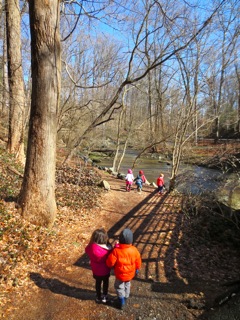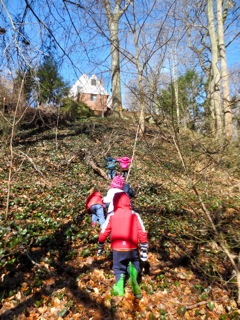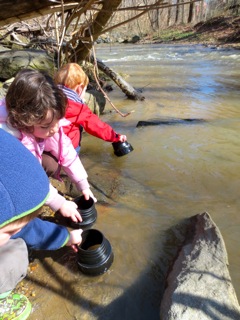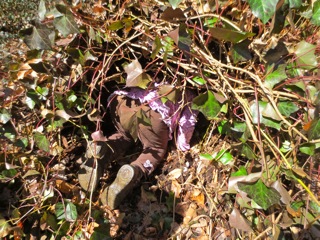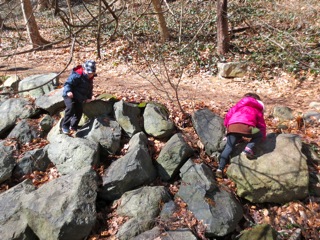Turn Left at the Bike Bridge
"So, basically you are testing the children on things you haven't taught them." This hard news statement delivered by a parent at a parent-teacher conference has been seared into my memory for years now and I really do mean seared. While most of our understanding of what children know and can do is established through anecdotal observations and work samples, I conduct a handful of formal assessments in the second half of the prek (Tracks) year. Our educational philosophy is built on a practice of observation, reflection, and scaffolding. My intention for these formal assessments is to create an opportunity in which the children can experience what it is like to complete a set of teacher-led, on-demand tasks. The information gained through their responses should only be viewed as a baseline for a little piece of what our local elementary schools outline as "kindergarten ready."
Philosophically, my focus and my hope is that the children's primary activities are to learn how to interact in a social setting, gain a full understanding of their physicality (in motion and in space/place), and to think creatively and independently. So, even though there is this "data" to review, it is only a tiny, tiny bit of the child's educational journey, just as it is a tiny, tiny bit of what makes someone ready for kindergarten. There seems to be so much fear-factor focus on whether or not a 5-year old knows the alphabet, but every kindergarten teacher would rather be assured that children can put on their own coats and shoes,can take care of their stuff and themselves, and can walk through a classroom without knocking over other children. A child's firm grounding in social-emotional dispositions and self-awareness assures the elementary school teachers that they can get on with their job of teaching them to read, etc. etc.
During this particular parent-teacher conference, we had moved past an assessment of relational terms and through a checklist of print concepts and were reviewing letter and phoneme recognition. This last bit seemed to be the all-stop that brought on the parent's hard news statement. I heard it, in the moment, as a challenge to my ability to teach. Once clear of the existential and emotional free fall of the moment, there has been all sorts of growth because it was a challenge, but not one in which my ability was being questioned. It was a challenge to explain my practice. It was abundantly clear on that day and every day since, that we are challenged as educators to show how we teach "the essentials", what those essentials are, and to send the message, I am teaching your child when we . . .
Go to the forest, for example.
Let's consider that formal assessment of relational terms. A child must be able to comprehend and decode -- to find meaning -- in spoken language in order to read. The one is essential to the other. The assessment features a set of images along with verbal prompts. The child must listen to the prompts and identify the image that corresponds with the description ("next to", "above", "farthest", "most", etc.) -- these terms are also connected to math, but reveal a tiny window into language comprehension. When we go to the forest, these very things are experienced in a full body way and as we all know, this full body experience will have a more profound and lasting impact on the child than looking at a set of flashcards and identifying corresponding prompts!
It is important to note the value of returning to the same place over and over. We create a common understanding of place. The common understanding is expressed through language and by walking and climbing alongside each other. Following each trip, the children create new maps. These maps are graphic representations of what they have experienced and discussed. Each time we return to this special spot that is theirs and only theirs, we discover new aspects of place. During our last visit, the snow hid landscape features that are now uncovered and since the Spring-growth has not been fully triggered, these features are suddenly thrown into stark relief against the rain and snow-saturated ground. We feel, through feet and hands, the soft muddiness of the creek's edge. It becomes easy to miss the place the water begins and the bank ends. This is experienced in a boots filled with water way. The edges of Rocko Obama can be seen clearly and new fallen trees have been discovered. So many new landmarks and details to add to our conversations and reflections later.
Over, under, around, and through, not to mention farthest, closest, left, and right are all conceptual leaps taken first with body and then with mind. Welcome to the forest, there is teaching going on!


